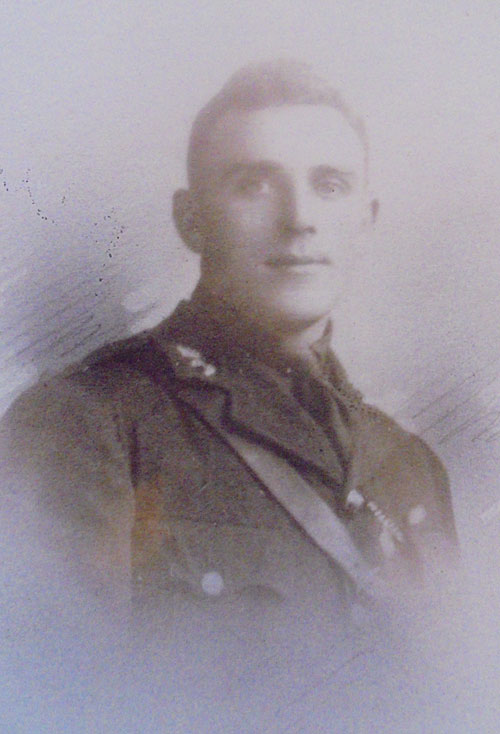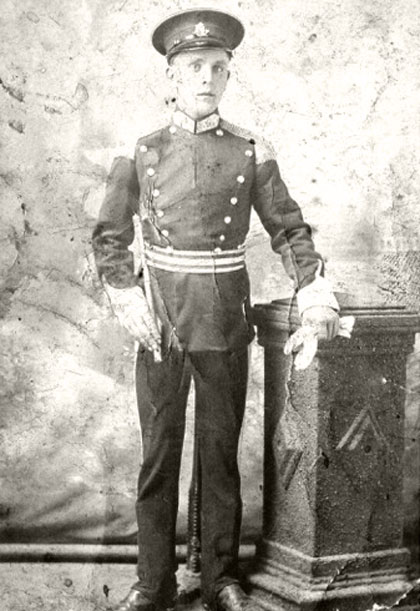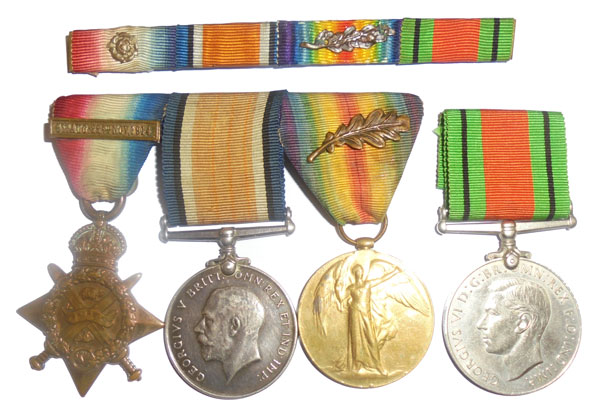Second Lieutenant Henry James Armstrong

Henry James Armstrong was born on 6 September 1895 at Stranafely, Brookeboro, County Fermanagh, the first of at least nine children to farmer Thomas Armstrong and his wife Elizabeth (nee Jones).
He enlisted in the North Irish Horse in October or November 1912 (No.751 – later Corps of Hussars No.71092).
On the outbreak of war he was mobilised and joined A Squadron, embarking for France on 17 August 1914. In the following months the squadron served during the Retreat from Mons and Advance to the Aisne. A letter he wrote home at the time was published in the Belfast News-Letter of 10 December 1914:
WITH THE NORTH IRISH HORSE.
Fermanagh Man's Letter from the FrontMr. Harry Armstrong, a former officer in the U.V.F. Force in Brookeborough, writes home an interesting account of his experiences with the North Irish Horse at the front. On the 26th August, he says, they had been doing rearguard for the 4th Division, and had been in action from 3.30 a.m. till 5 p.m., and were almost "done up," having got no rest or sleep for some time previous. That was in the retreat from Mons. "We stopped at a little village to feed our tired horses and to have some food ourselves. Lord Cole rode to the sentry furthest from the village, and returned at full gallop, with the signal 'Mount,' and then we got 'Action rear.'" Handing over their horses (the writer proceeded), they took up a position in the gardens, and opened fire at 1,100 yards, and left many riderless horses in the enemy's ranks. The Germans shelled the village, tumbling over the houses. Hiram Robinson, Brookeborough, and Sergeant Boyd (Maguiresbridge) ran for their horses, when a house which had been struck by a shell crashed down beside them. He saw Sergeant Boyd crawl out from under the fallen house – mud from head to foot – while Hiram Robinson was slightly wounded on the head. Six of them, including Robinson and himself, got detached from their troop, and fell in with the Dragoons, and took part in the charge of the 9th Lancers at Cambrai. "We did three cavalry charges altogether," he adds, "and several bayonet charges with the infantrymen. Nothing puts the Germans to flight like the steel. We charged the infantrymen in the trenches, and with the signal 'Close' we closed knee to knee and cheered our best. Somebody shouted, "Hurrah for Ulster," and somebody else 'No Surrender,' and if you had seen the Germans you would never have forgotten it. They turned as pale as death, and instead of meeting us with fixed bayonets they dropped their rifles with pure fright, and then all was roars and confusion. But we came safe through, anyway. 'No Surrender' for ever."
Later that year A Squadron moved to St Omer, where it remained until January 1916 as escort and bodyguard to the commander-in-chief General French.
At some point during the war Armstrong was mentioned in despatches, and rose to the rank of Warrant Officer Class 2. He was commissioned as a 2nd lieutenant on 30 October 1918 and posted to the 3rd (Reserve) Battalion, Royal Irish Fusiliers.
2nd Lieutenant Armstrong resigned his commission in April 1920.
On 1 September 1920 he joined the Royal Irish Constabulary's Auxiliary Division (No.514) , serving in E Company. On 19 January 1922 he was discharged on the demobilisation of the Division.

Armstrong photographed at the NIH annual training camp at Newcastle in June 1914

Armstrong's medals
Images kindly provided by Roy Suitters. Information about the Auxiliaries sourced from the website The Auxiliary Division of the Royal Irish Constabulary.
